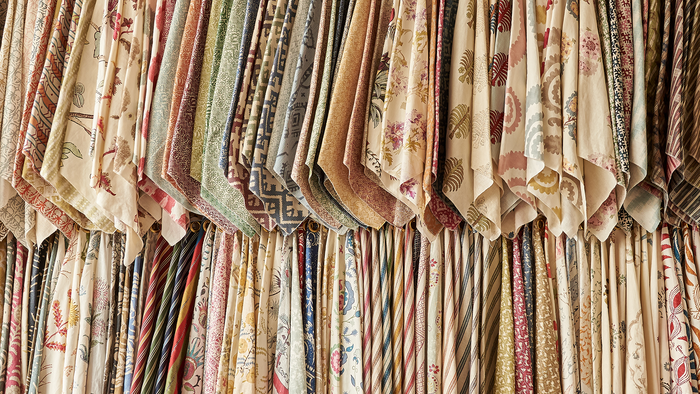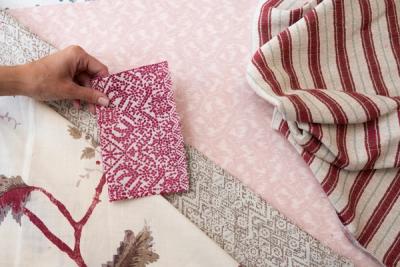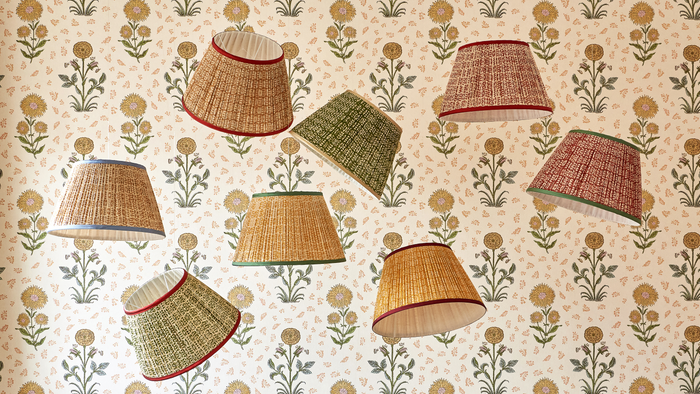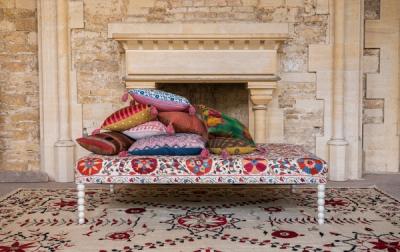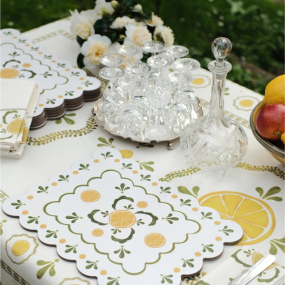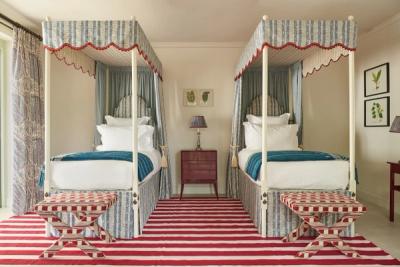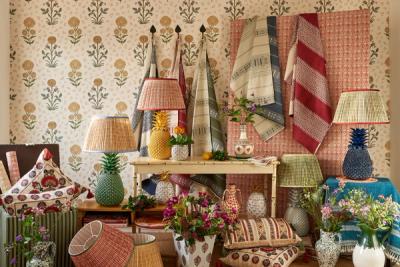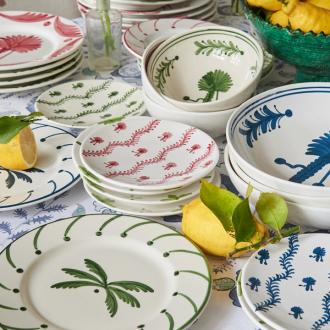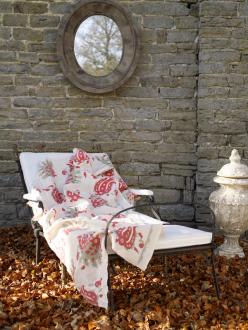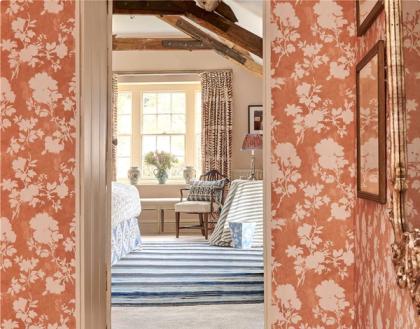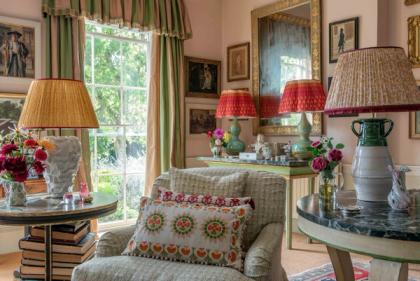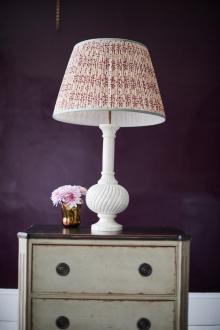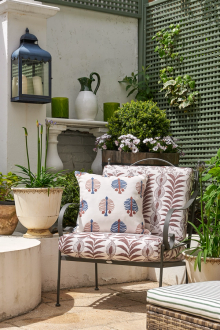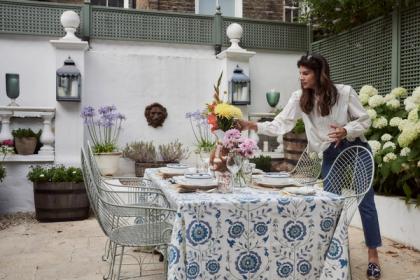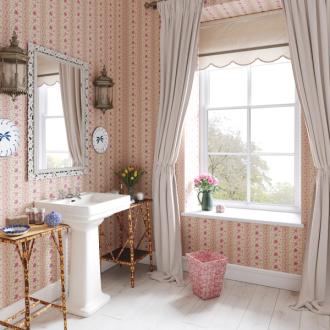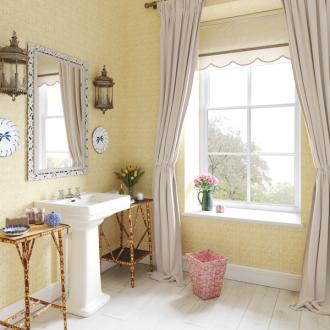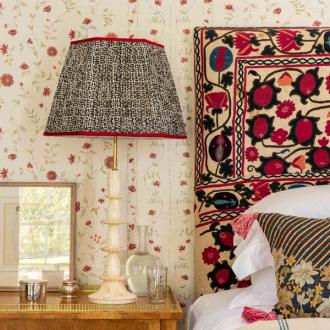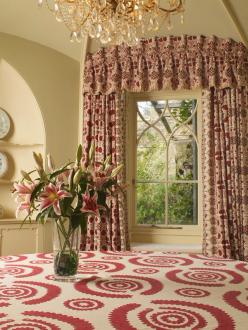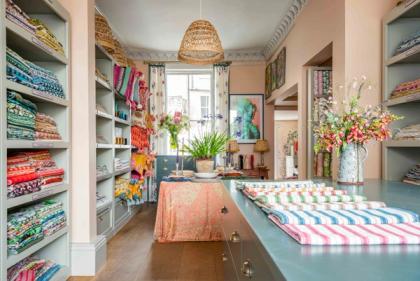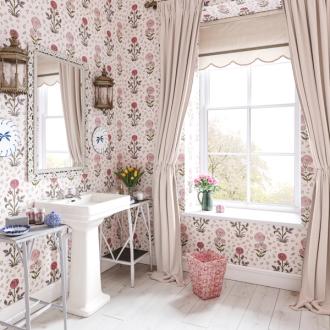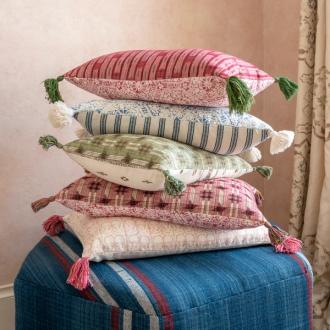The Penny Morrison Buyer's Guide to Fabrics in Interior Design
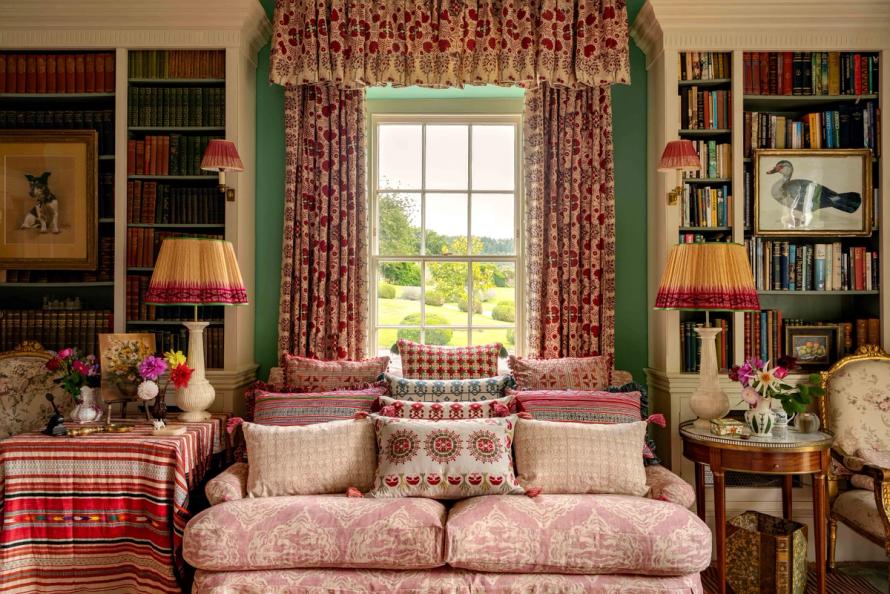
The Penny Morrison Buyer's Guide to Fabrics in Interior Design
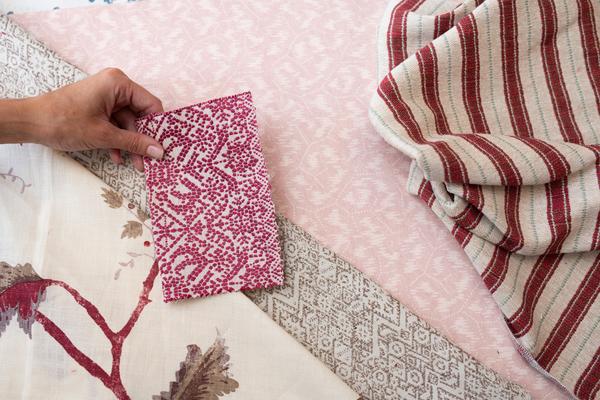
There are few elements as transformative for the home as fabric. Take any room, and consider the influence textile has on its comfortability, its beauty, its usability, and its sense of completion. In the bedroom, the minds’ eye drifts from the curtains to the headboard, the headboard to the cushions and pillows, to the quilt, the valence, the chair drawn up to the dressing table.
In the lounge, it drifts from the window seat to the sofa plump with cushions, the house-favourite armchair, the footrests, and throws.
Through, next, to the dining room, where the table is laid with its cloth, napkins and placemats, and the room made intimate and blissfully secluded from the rest of the world by pooling curtains at the windows.
We could go on and on, such is our passion for textile, and for our own collection of fabrics. Print, texture, colour, and drape are what makes a room appear joyfully bohemian, classically appointed, relaxed and summery or cosy in the heart of winter.
Here is everything you need to know about fabrics in interior design.
• Natural vs Synthetic
• Upholstery
• Curtains
• Bedding
• Indoor Outdoor Spaces
• Judging a Swatch
Natural vs Synthetic
You don’t need us to tell you that there are many, many different fabric types out there, but that one of the easiest ways of whittling down your list of choices is to separate them into two categories – one for natural fibres, and one for synthetic – and work out which of those categories you are better suited to.
Of course, some fabrics are blends of the two (more on that in the next section) but, for now, we’ll focus on wholly natural vs wholly synthetic textiles.
Natural Fabrics
Human beings have been weaving, trading, wearing and repurposing natural fabrics for hundreds of thousands of years. While we started off with animal furs, archaeological findings suggest that we began to weave natural fibres together from the 7th century BC onwards.
Four of the most popular natural fibres are flax, cotton, silk, and wool, although other fibres include hemp, jute, and mohair. Each one is processed quite differently, producing very different textiles that offer unique advantages and disadvantages to upholsterers, dress makers, decorators and home sewers.
Across the board, some of the most favourable traits shared by natural fibres are their biodegradability, and the fact that their fibres are grown naturally – not manufactured using harsh chemicals and high-energy processes.
But the ongoing popularity of natural fibres is not solely down to their environmental benefits. They offer a long list of traits that make them ideal not just for clothes making, but for interior design:
• Breathability
While we often consider the importance of breathability for our clothes, it is equally as important for the fabrics we use within the home. Chairs and sofas prove significantly more comfortable to sit on when they are upholstered with a natural, breathable fabric – whether in the summer or the winter – and, for obvious reasons, breathable bedding is far more conducive to a comfortable and healthy night’s sleep.
• Durability
Most natural fibres are composed of cellulose which gives them a great deal of strength and durability. This is yet another reason why natural textiles are considered far more environmentally friendly than their synthetic opposites, since buyers are likely to be able to keep and use them for years (if not decades) longer, thanks to their innate resilience to regular use or wear.
• Absorbency
Natural fabrics tend to be very good at wicking moisture from the body. This is why linen and cotton in particular are such clear winners for the holiday wardrobe, as well as use around the home (particularly bedding and upholstery). It makes for a much greater level of comfort and avoids anyone feeling as though they are overheating on the sofa.
• Allergy Friendliness
The breathability of natural fibres already makes them a sounder choice against the skin, since bacteria will find it significantly more difficult to thrive when the air is able to permeate, and moisture is quickly wicked away. But, beyond that, natural fibres contain far fewer chemicals, making them a much more reliable choice for anyone with sensitive skin.
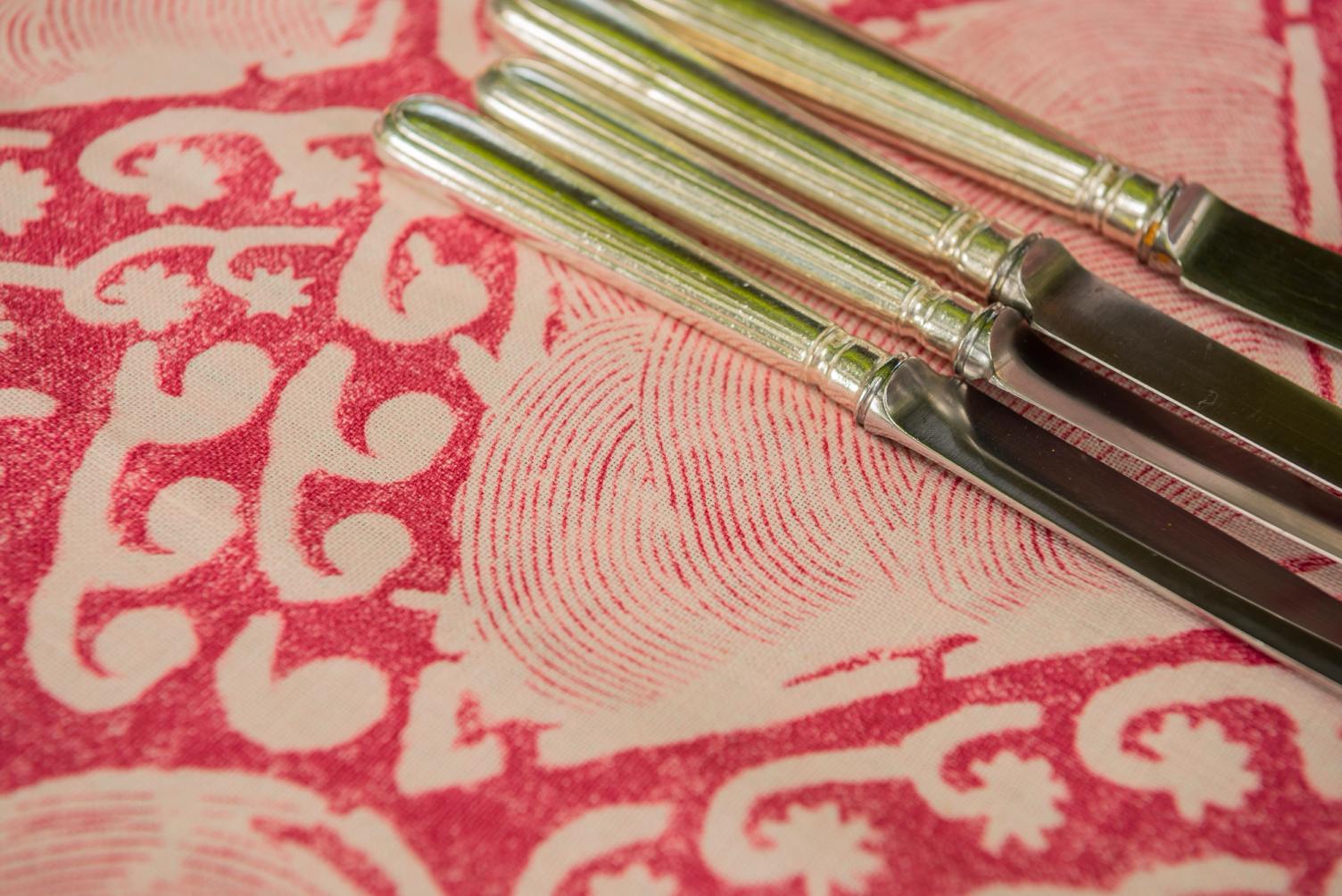
For use around the home, rather than in clothes making, linen and cotton are almost always the strongest choices. Silk’s fragility means that it is only suitable for decorative pieces, which, for obvious reasons, can be impractical. Jute is very coarse compared with other natural fibres, while hemp requires a little extra effort to maintain, since it can shed.
We have already compiled a full guide to linen, and its value for interior design, if you’re interested in learning more.
Synthetic Fabrics
There are many, many different types of synthetic fabrics out there. Some certainly hold more merits than others, but many of them are let down by similar issues when it comes to use around the home.
Their popularity largely stems from their lower cost, and the fact that they can be produced relatively quickly, and in larger batches, makes them an effective money-spinner for largescale manufacturers. Of course, plenty of light has been shed on what can, at times, be dubious practices – particularly in the realm of fast fashion, but also in other areas of textile production. Where skill, time, and attention to detail can be cut out of the equation, the risk to workers increases – and, for the most part, the value for the buyer decreases.
These fabrics tend to be unbreathable, less durable, and far more environmentally harmful than natural fibres. Many of them take hundreds of years to biodegrade, if they ever do, which only exacerbates the environmental issues associated with their production.
What about blends?
Sometimes, a natural fibre like cotton will be blended with a smaller amount of synthetic or semi-synthetic fabric, such as viscose, in order to marry together the unique benefits of each one. In this way, synthetic fabrics needn’t be seen as the ‘enemy’ to interior design, since the natural strength and durability of cotton means that the pieces will be built to last through many years’ worth of use.
Viscose, for instance, is the product of ‘regenerated cellulose’ (which, as we mentioned above, is the building block of many natural fibres). A common source of this regenerated cellulose is wood pulp, which is processed into fibres that offer a silky, smooth feel we associate with viscose. It is, occasionally, referred to as artificial silk, although it’s technically a semi-synthetic fabric (man-made, but comprising natural fibres).
Combined with cotton, which is naturally more breathable and durable, it creates a fabric with a beautiful drape and light, silky texture, but without the disadvantages associated with synthetic textiles.
Upholstery
The term ‘upholstery fabrics’ is, admittedly, quite broad. Many different types of fabrics can be used to upholster furniture but, as always, some prove better than others.
For obvious reasons, upholstery fabrics need to be durable and long-lasting, and they need to be resilient against warping or stretching out of shape. A sofa upholstered in a fabric that is easily stretched out of shape will, in a matter of months, start to look incredibly tired and well-loved, whereas, ideally, a well-made piece will last you for decades.
Linen and cotton are perfect for upholstery, but it’s also worth considering our weaves, which are even more durable (but still soft enough to feel comfortable and luxurious to sit on). The Chennai Weave – see it here in our Corsican colourway – is a great example of a slightly heavier-duty textile that retains the best qualities of cotton.
For more information, you can click here to read our guide to choosing upholstery fabrics and knowing what type of textile is fit for purpose. Alongside colour, pattern, and texture, you will also want to consider washability, colour (vividity, and its ability to retain colour without fading or bleeding), breathability and durability.
How much will you need?
We’d recommend reaching out to your upholsterer before going to have your fabric cut. While it is possible to guesstimate the amount of fabric a piece of furniture will require using its measurements, waiting for your upholsterer to give you an exact number will prove the most useful – for them, and for you.
A headboard will, generally, be far easier to gauge than a wingback armchair but, in either instance, being able to provide your upholsterer with a single piece of fabric, rather than the required volume of fabric in two separate pieces.
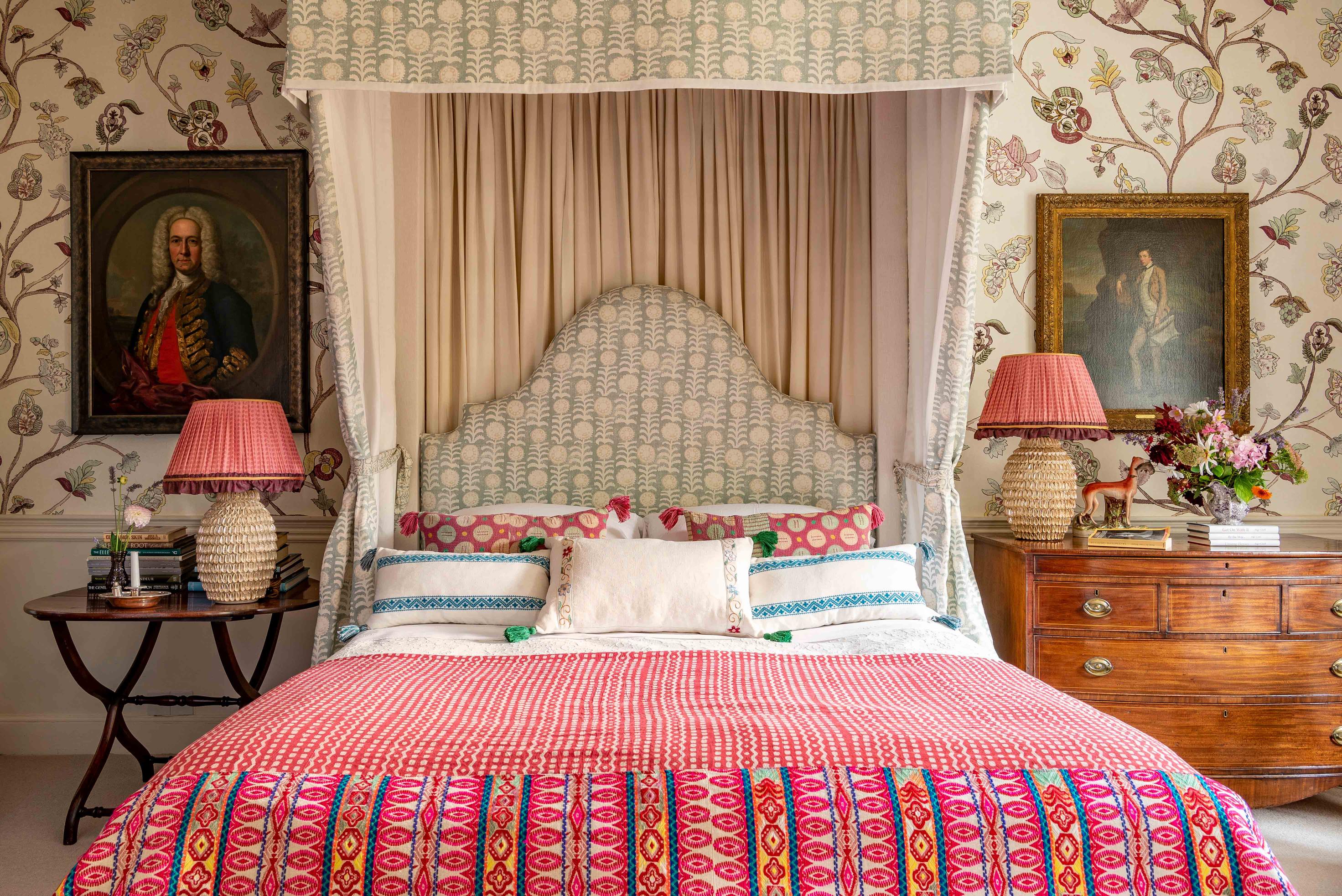
Curtains
Curtains can be made from any fabric. They can be as simple (or as decadent and ornamental) as you want them to be, from a simple, near-translucent sheet of light linen wafting back and forth through the French doors to a resplendent, window-framing set-up of lined curtains draping down from a matching pelmet and drawn back elegantly by twisted rope tiebacks.
Linen and cotton are excellent choices for curtain fabric, since its natural qualities make it ideal for temperature regulation during hot summers and cold winters, and its breathability prevents the room from feeling stifled. They both offer beautiful drapes – while linen tends to exhibit an organic crease pattern, cotton tends to drape more regularly. Which one you prefer will depend on the style of the room.
For a full explainer, click through to our guide on choosing curtain fabrics.
How long should curtains be?
There’s no definitive answer to this. Ideally, however, the length you choose ought to look intentional, rather than arbitrary. In other words, if you don’t want your curtains to reach the floor, then keep them proportionate to the window frame and don’t choose a length a third of the way, say, between the windowsill and the floor.
If, on the other hand, you would like to achieve the sumptuous look of pooled curtains, have enough fabric cut to create a significant pool. If only a few inches of curtain are hitting the floor, then they may just look in need of a re-hem.
If you’re worried about overwhelming a relatively small window, then a good tip is to place your curtain rod several inches clear of the top of the window. Similarly, choose a rod that extends beyond the edges of the window frame by at least three inches on either side. This will ensure that the bulk of the curtain hangs down the wall, rather than covering the edges of the glass and making the window appear even smaller than it is.
How wide should curtains be?
Again, the answer will vary depending not just on the width of your window, but also on the look you’re going for. Thicker fabrics should be cut at least twice the width of the window but, if you’re opting for a light, summery linen, then cutting it three to four times wider than the window will achieve that attractively full and elegantly draped look so many designers are aiming for.
Bedding
There could not be a more perfect choice for comfortable, long-lasting bedding than linen or cotton. While they may be lightweight and breathable, these fabrics share a natural ability to regulate temperature – meaning that, in the winter months, they will help to keep you warm in bed, without creating a stiflingly hot, humid environment under the sheets halfway through the night.
Your bedding comprises everything from pillowcases, duvet cases, quilts and sheets to the valance and any other throws or covers (decorative or usable). As always, you should give yourself plenty of time to study your fabric swatches, but the more so with bedding as it needs to represent the very height of comfort in your home.
Varying textures, patterns, and hues create the depth most of us are looking to achieve, and you can find out more about layering up a sumptuous bedroom here.
Indoor Outdoor Spaces
Any liminal parts of the home that are subjected, to a certain degree, to the outdoor elements (whether this is the weather itself, or just plenty of muddy shoes, damp clothes, outdoor food and drink need to be given extra attention when it comes to choosing fabrics. There’s no reason to shy away from the world of textile, whether you’re looking to decorate a conservatory, summerhouse, or patio.
Performance fabrics will be your friend as you turn to these parts of the home. We’ve written a full guide to performance fabrics, which makes for vital reading if you’re at all concerned about fading, staining, mildew, and tearing.
Judging a Swatch
If you’re looking at fabrics, the best way to do so is with a swatch. Seeing a fabric within your home, and giving it that context, is so important, particularly if you’re in the early stages of decorating a new space.
Consider its ‘repeat’
Alongside any patterned fabric you see on our site, there will be a ‘Repeat’ measurement listed in the specifications. This will give you a good sense of the scale of the pattern, as it lets you know the measurement between the start of the pattern, and the point at which it repeats once again.
This is particularly useful to know if you are going to be using the fabric in a small area – for instance, as a curtain for a little window, or to upholster an armchair requirement many smaller sections. You don’t want to fall in love with a pattern, only to find that it’s too large to suit the purpose you had in mind for it.
In much the same way, if you had a large, bold abstract in mind for your room’s main window, then you’ll want to make sure it’s big and bold enough to live up to expectations before you invest in yards of it.
Consider light and time of day
It’s easy to fall for a single colour, particularly when you happen to view it under a good, natural source of light, but keep in mind that everything – paint, wallpaper, carpets, and fabrics – will evolve throughout the course of the day, or even between the seasons. Dawn and dusk, midday and golden hour, all create a unique ambiance in the rooms of your home, and it’s worth taking the time to appraise your swatches throughout the day and evening – even under lamplight, when the sun has gone down – to see how they behave.
Think about how it fits with your colour story
Most of us pursue a colour story of sorts when we are decorating. This process will look more regimented for some than it will for others, but the bare bones of it is that, before we start buying up the bolts and yards, we will be able to name a handful of complementary colours that will inform almost all creative choices for the room, from the paint and wallpaper to the flooring, upholstery, artwork, and any other accents.
Choosing fabrics is, in our opinion, one of the most enjoyable processes any homeowner goes through. Rifling through bolts of gorgeous prints and textured weaves, running your hand over swatch after swatch at the dining room table, measuring and firing ideas back and forth with your upholsterer – there is so much to love about discovering, for the first time, quite how transformative fabrics are for interior design.
You can take a look at our full range of fabrics (and order swatches) if you click here.
